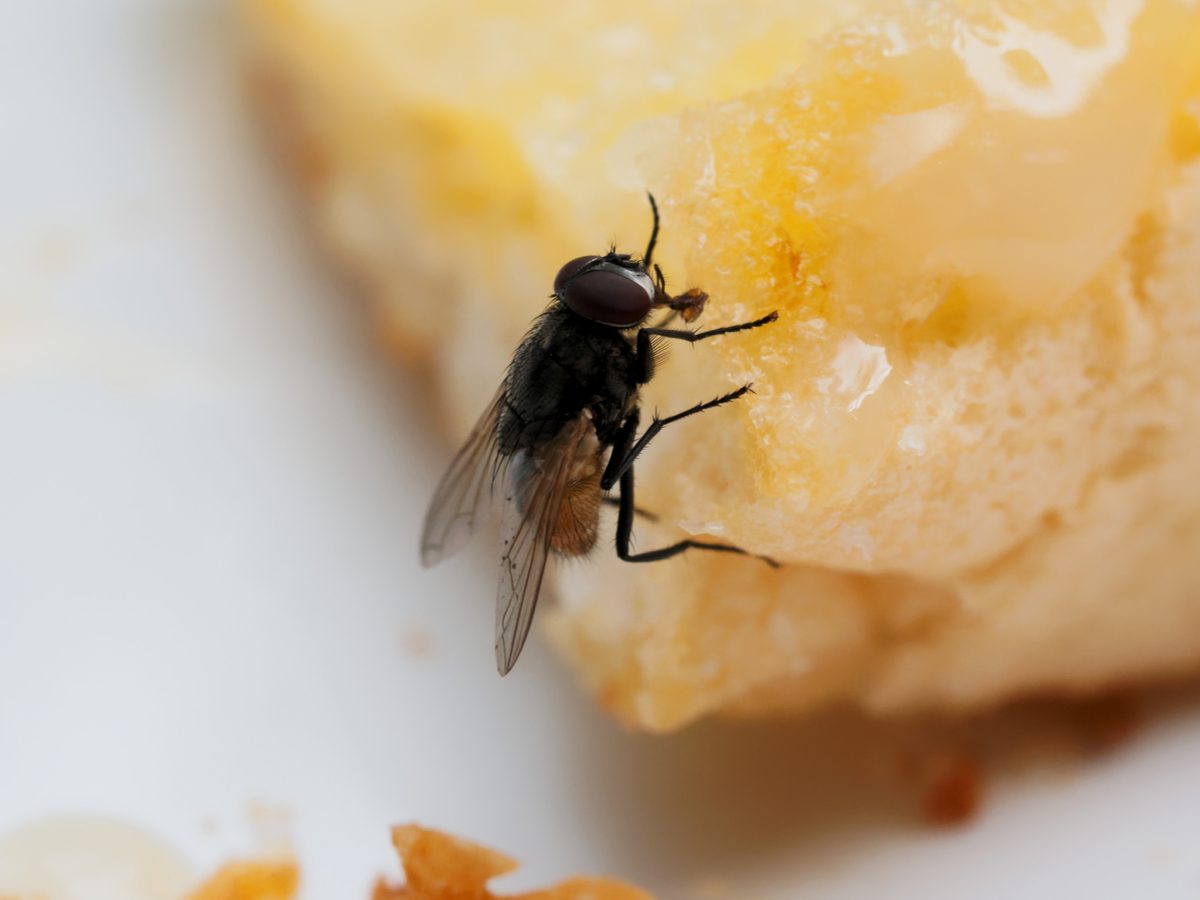The Gross Truth About What Happens When a Fly Lands in Your Food
The truth is worse than you probably think, but is the food still safe to eat?

What happens when a fly lands on your food?
When a pesky fly lands on your food, you probably shoo it away and keep on eating. But should you be worried about germs?
There are at least 100 different pathogens houseflies can carry, like bacteria, viruses, and parasite eggs, says Thomas J. Daniels, PhD, associate research scientist and director of Fordham University’s Vector Ecology Lab at its Louis Calder Center.
Once a fly picks up germs, it can spread the disease in a few ways. Bacteria and viruses on contaminated food, manure, and other germ-heavy spots stick to a fly’s body and the tiny hairs on its legs, says Daniels. When it flies away and lands somewhere else—like your food—it leaves some of those germs behind. “So we’re potentially at risk even from a fly landing on food, though the amount of pathogen transmitted is likely to be small,” Daniels says.
But the bigger concern comes from fly vomit. And yep, it’s as gross as it sounds.
When a fly lands on your dinner, it isn’t biting tiny nibbles off your plate. Instead, the insect vomits digestive juices onto the food to break it down so it can “lap up a liquid meal,” says Daniels. But that’s not even the worst part.
The vomit is full of germs from its last meal. And the pathogens inside the fly live longer than the ones on its feet, which means there’s a bigger chance the bacteria and viruses stay alive. Those germs mix with the fly vomit and stay in the fly’s mouth until the next time it eats, creating a recipe for disease.
What germs could flies spread?
Some of the germs can be pretty scary. Scientists know flies can spread E. coli, salmonella, hepatitis A, and rotavirus, says board-certified infectious diseases specialist Brent W. Laartz, MD, author of How to Avoid Contagious Diseases. There’s also Shigella—a group of bacteria that can cause diarrhea, fever, and stomach pain—which is particularly concerning because it doesn’t take much for the bacteria to make you sick.
But before you start dumping all the food on your dinner table, know that not every fly will carry all (or any) of those germs. The ones mentioned above are all fecal bacteria and viruses, which don’t exist on everything flies eat. “The fly would have to land on raw meats or feces to spread these bacteria [and viruses] to your food,” says Dr. Laartz. The cleaner your kitchen, the less chance that the fly picked anything up before munching on your meal.
Plus, just one fly on your food isn’t a guarantee that you’ll get sick from its germs. Depending on how many germs the fly carried, how long it sat on your food, and how strong your immune system is, you might never get infected, says Daniels. So if a lone fly landed once on your food and your house is clean, you can probably keep eating safely, says Dr. Laartz.
The bigger worry would be if you’re in an area buzzing with bugs, like a picnic. After all, the more flies that land on your meal, the more germs they could leave. “Cover your food while you are waiting to eat it,” says Dr. Laartz, who suggests using a fly cover or another plate. If you see flies buzzing around food that you’ve left uncovered for a while, throwing it out is your safest bet, says Daniels.
Next, here’s what restaurants could look like after the COVID-19 pandemic.



